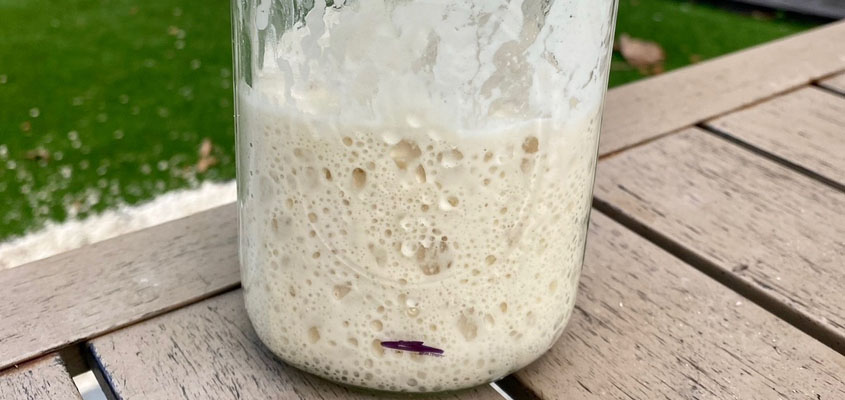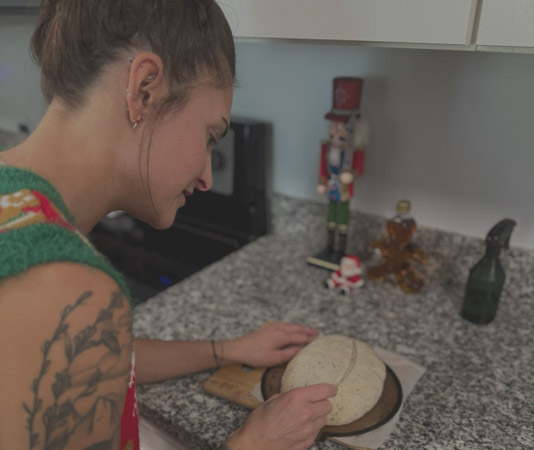
- Add your 6 grams crumbled dried sourdough starter to a bowl. Add 26 grams filtered water. Stir until the dry starter is completely submerged in the water. Cover with a lid and allow mixture to sit for one hour at room temperature.
- After an hour, add 20 grams bread flour (preferably organic) and stir until thoroughly combined. Note: We’re using slightly more water than flour in this first feeding – a thinner, more hydrated starter allows for increased activity for yeast and bacteria. Cover with a lid and rest at room temperature for 24 hours.
- Combine 10 grams starter mixture (discard the rest – you can keep a discard jar and google some discard recipes to put this to use!), 26 grams bread flour, and 26 grams room temperature filtered water in a bowl. Mix until thoroughly combined. Cover with a lid and rest at room temperature for 24 hours.
- Repeat step 3 one or two more times if you aren’t seeing any signs of life yet (bubbles) otherwise go on to step 5.
- Your starter is rehydrated! At this point, feed your starter again like step 3 (or at any ratio you want). After it rises you can use it for bread or put in the fridge until you’re ready to use him.
- Note: Sourdough is a highly variable process. Sometimes the starter will be ready after the first feed, sometimes it’ll take 4 or more feeds.
- Once he’s rehydrated and active be sure to check on him after 4 hours or so. He needs to be refrigerated or used. It’s not a good habit to leave him at room temperature unfed for too long or you’ll risk him becoming too acidic eventually.
- Another note: If using a glass jar, don’t keep the lid screwed on too tight while the starter is rising, even though the starter is anaerobic and doesn’t need air to rise, you’ll risk explosion with the gas being created in there.
- Everything in sourdough is dependent on temperature. Our ambient temperature averages 74-77°F.
- When it’s warmer, your starter and bread will rise faster. When it’s cooler, it’ll take longer.
There’s a million sourdough techniques online, if you’ve never made sourdough before find a simple one to start with then tweak from there. The best part of sourdough is there’s no right way, experiment and have fun!
One of my favorite simple techniques when I first started was Elaine Boddy’s master recipe. Her book Sourdough Whisperer was great for getting a high level understanding of the process.
Follow us on social media for processes and info on your new starter’s parent, Joe Doughgan! And always feel free to reach out to us with any questions that come up!
About Joe Doughgan:
Get 15% off your next purchase by signing up for sourdough content delivered to your inbox!
*Limit once per customer

